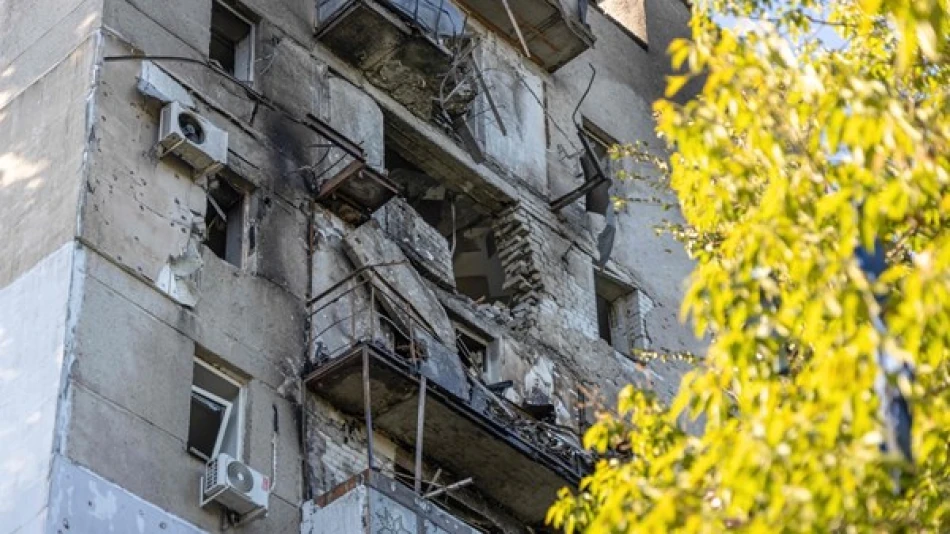
Civilian Casualties Mount as Intense Shelling Strikes Ukrainian Regions
Russia Escalates Winter Campaign with Massive Drone and Missile Barrage Against Ukraine
Russia unleashed one of its largest coordinated attacks in recent months against Ukraine, launching 344 drones and 35 missiles overnight that killed at least three civilians and targeted critical infrastructure across multiple regions. The assault represents a significant escalation in Moscow's winter campaign strategy, designed to weaken Ukrainian morale and strain air defense resources as the conflict enters its third year.
Deadly Strikes Hit Civilian Areas
The overnight bombardment claimed lives in both eastern and southern Ukraine. In the town of Vasylkivska in the Dnipropetrovsk region, a missile strike killed at least two people, according to regional governor Serhiy Lysak. The industrial heartland has become a frequent target as Russia seeks to disrupt Ukraine's remaining manufacturing capabilities.
Southern port city Odesa and its suburbs also came under heavy drone attack, with national police reporting one death and six injuries. The strikes triggered fires that required extensive firefighting operations, highlighting the continued vulnerability of Ukraine's critical Black Sea grain export hub.
Air Defense Systems Under Unprecedented Strain
Ukrainian air forces managed to intercept 208 of the incoming projectiles, representing a 57% success rate against the massive barrage. However, five missiles and 30 attack drones penetrated defenses, striking 12 locations with debris causing additional damage at seven sites.
The scale of this attack—344 drones alone—marks one of the largest single-night drone deployments Russia has launched since beginning its systematic infrastructure campaign in October 2022. This volume appears designed to overwhelm Ukraine's air defense systems through sheer numbers, a tactic that could signal Russia's growing confidence in its drone production capabilities.
Strategic Implications of Russia's Drone-Heavy Approach
Russia's emphasis on drones over expensive precision missiles reflects both economic constraints and tactical evolution. Iranian-supplied Shahed drones cost roughly $20,000 each compared to hundreds of thousands for cruise missiles, allowing Moscow to sustain high-volume attacks while preserving costlier weapons for high-value targets.
The Russian Defense Ministry claimed the strikes targeted "military-industrial complexes," using language that typically justifies attacks on dual-use infrastructure including power plants, factories, and transportation hubs. This dual-targeting strategy aims to degrade both Ukraine's military capabilities and civilian resilience simultaneously.
Winter Campaign Intensifies
This massive assault fits Russia's established pattern of intensifying attacks during winter months when heating and electricity become critical for civilian survival. The timing suggests Moscow is attempting to maximize psychological pressure while Ukrainian forces are potentially distracted by seasonal defensive preparations.
For Ukraine's allies, the attack's scale underscores the urgent need for additional air defense systems and interceptor missiles. The country's ability to shoot down 57% of incoming threats, while impressive, still allows significant damage from the remaining projectiles—a mathematics problem that favors the attacker when launch volumes reach these levels.
Most Viewed News

 Layla Al Mansoori
Layla Al Mansoori






